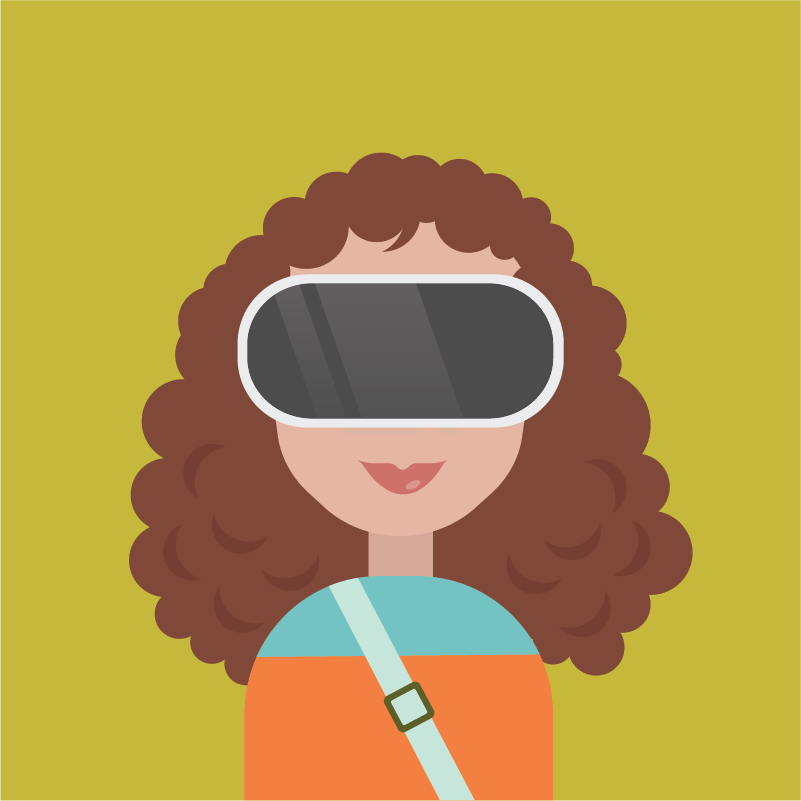Primary research question:
How can a personal process of inquiries be effectively organized and experienced as an immersive virtual environment?
How can a personal process of inquiries be effectively organized and experienced as an immersive virtual environment?
Main goals I specified for this project:
•Code specific virtual environment affordances (e.g., lighting, interactive properties, etc.) with symbolic meanings linked to my research journey, allowing for conceptual organization through spatial metaphors
•Develop interactive spatial annotations that embed insights about my design process and research interests within each virtual space
•Build an immersive experience that fosters user exploration and interaction
•Implement a seamless transition from VR to AR space
Timeline: May 2023 - April 2024
Project description:
Using a research-through-design approach and the medium of mixed reality, I am exploring how 3D virtual worlds can uncover additional formats for presenting personal inquiries and sharing them with others. My project consists of immersive virtual spaces whose structures depict the core ideas and connections within my research interests over the past two years. This project, designed for the Meta Quest 3 headset using game engine Unity, explores utilizing virtual environment design to convey relationships between abstract concepts, while also cultivating a sense of personal connection to a digital space.
Using a research-through-design approach and the medium of mixed reality, I am exploring how 3D virtual worlds can uncover additional formats for presenting personal inquiries and sharing them with others. My project consists of immersive virtual spaces whose structures depict the core ideas and connections within my research interests over the past two years. This project, designed for the Meta Quest 3 headset using game engine Unity, explores utilizing virtual environment design to convey relationships between abstract concepts, while also cultivating a sense of personal connection to a digital space.
The personal interest categories I incorporated in the design of this environment were derived from main themes within my MFA research, and they include the Intersections of Virtual + Physical Qualities, Clothing in Virtual Environments, Text in 3D Spaces, Interaction Design, and the Intersection of Shared + Personal Spaces, each layered with their subtopics. To translate my research into a VR/AR space, I coded specific virtual elements (lighting, interactive properties...) with symbolic meanings. In this project, I am interested in how organizing conceptual inquiries into “navigable spatial diagrams” through experiential media can foster new insights through interactive engagement.
Concept development:
During the first two years of the Design MFA program, I focused on discovering and formulating the driving themes within my broader research explorations. For me, this 'research thread' has consistently revolved around the medium of immersive technologies and the concept of meaning-making within 3D virtual spaces, from both a designer’s and a user's perspective. This thread served as the foundational concept for my entire thesis project, as I decided to explore how virtual environments could provide a constructive medium for representing this personal inquiry process as an immersive experience that can be shared with others.
During the first two years of the Design MFA program, I focused on discovering and formulating the driving themes within my broader research explorations. For me, this 'research thread' has consistently revolved around the medium of immersive technologies and the concept of meaning-making within 3D virtual spaces, from both a designer’s and a user's perspective. This thread served as the foundational concept for my entire thesis project, as I decided to explore how virtual environments could provide a constructive medium for representing this personal inquiry process as an immersive experience that can be shared with others.
I started developing this project by creating 2D diagrams and mind maps of my main research interests and visualizing their relationships. These conceptual connections guided the coding of the virtual environment affordances in this project, as the interconnectedness of all the spaces within this virtual world mirrors the overlap and progression of my primary inquiries which drive the project’s design and methodology. A lot of these affordances (like lighting and interactive object properties) are coded with symbolic meanings linked to my research journey that lead to spatial metaphors that allow users to generate multiple meanings within this environment. For example, intense lighting in a specific virtual space represents a high level of curiosity and relevance surrounding the inquiry that space represents.
One of my inquiry themes represented within this environment is the Intersections of Virtual + Physical Qualities. Some of my earliest explorations in this realm have been in Augmented Reality, a domain where virtual elements exist in the physical environment. To convey this, I decided to integrate an augmented space that can be only accessed from within the VR environment itself, by pressing a button that transports the user into a scene that utilizes the Oculus Passthrough feature - facilitating a seamless transition from VR to AR. This transition from virtual to augmented spaces is one of the less-explored research areas I am delving into with this project.
Augmenting a portion of this virtual environment extends its presence into the physical world. The AR space shares several common virtual objects that the user encounters in the VR space. This visual intentional parallel emulates the process of users figuratively taking something with them from the virtual environment they just visited into this transitionary AR space. Finally, it’s worth noting that this experience often unfolds within the ACCAD sim lab 1 space, and this overlay shines a direct spotlight on the physical space that has been instrumental in developing my research and practice over the past three years.
The early storyboard below illustrates the idea for the transition from VR to AR space in my project, as well as the process of unveiling spatial annotations, which I will describe next:
VR-TO-AR TRANSITION:
Augmented part of the virtual environment (images taken inside Meta Quest 3):
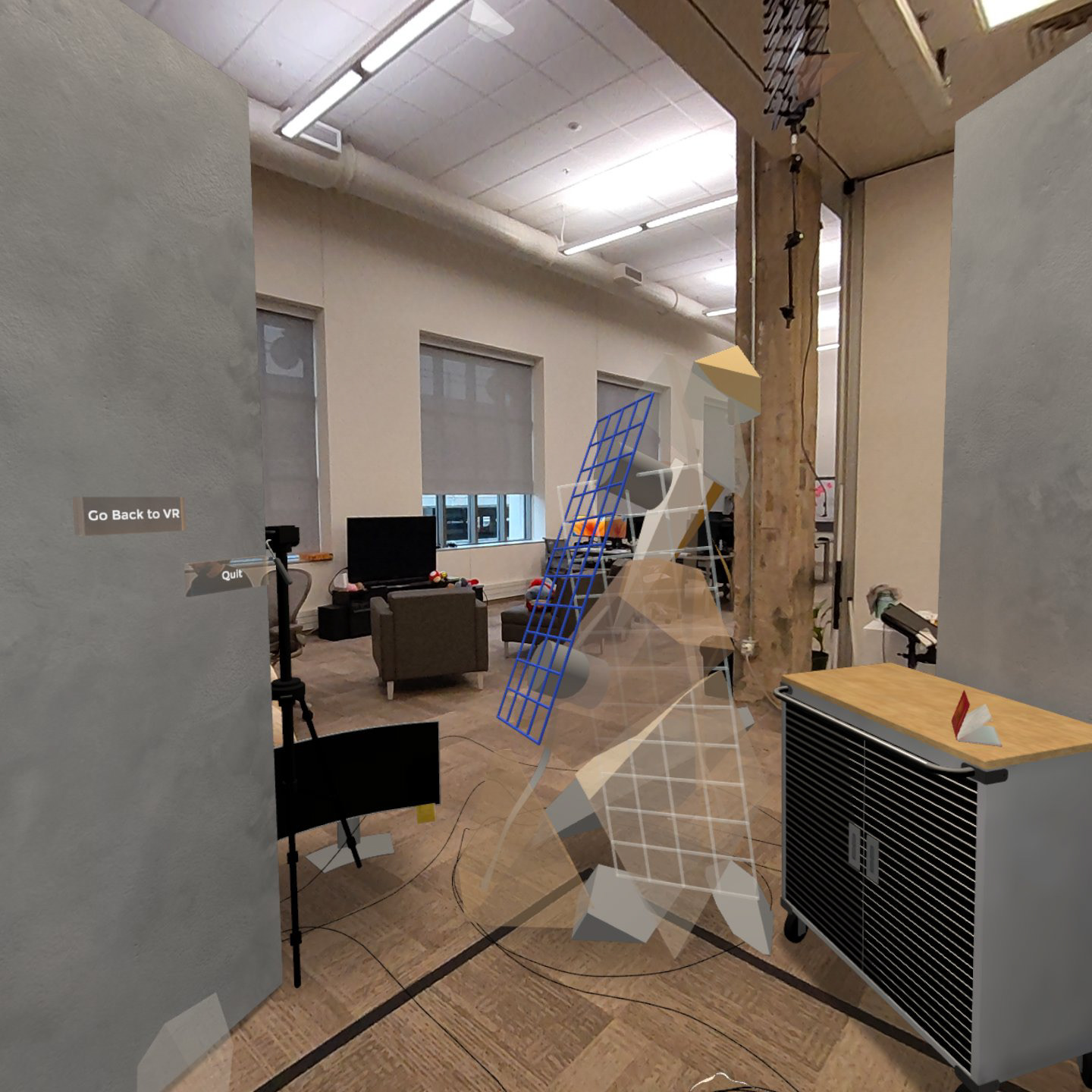
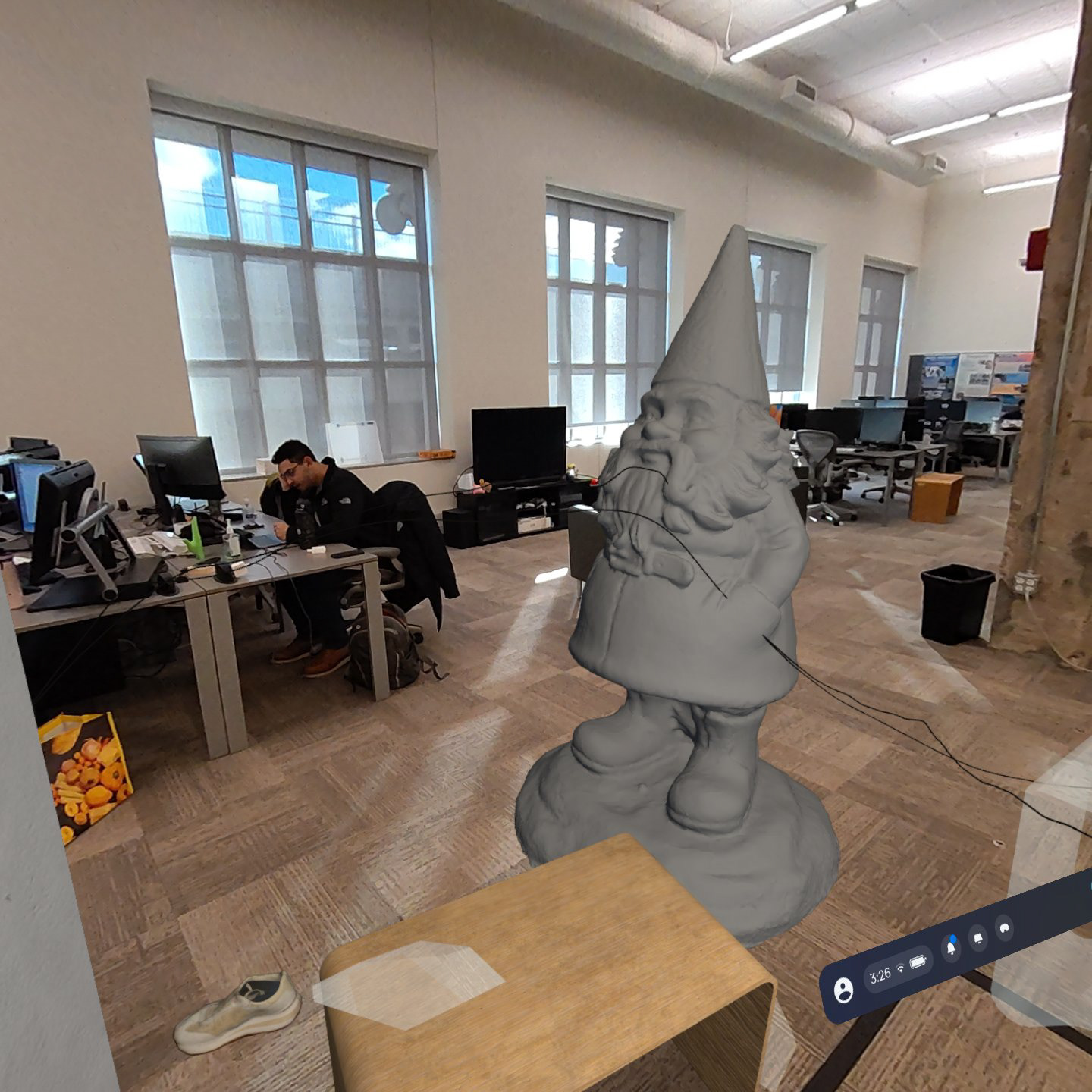

SPATIAL ANNOTATIONS
Main goals of annotating this environment:
•Provide access to further insights (when wanted) about the represented inquiries and the design process
•Provide a visible thread that connects all the spaces/concepts and serves as a wayfinding tool
•Provide a sense of engagement and discovery as each annotation is unveiled
Another area where more research is needed is text positioning within mixed reality spaces. In this project, I am exploring ways of offering insights into my journey behind this virtual environment’s design directly within it, through annotations that users can unveil gradually as they explore each space.
To build an interpretative experience for users, I structured a nonlinear narrative about my research that can be experienced by moving through the environment. I refer to the pieces of this narrative as spatial annotations. These annotations help communicate what can be done in a specific space, what it represents, and how that area is significant to my inquiry process.
All the spatial annotations are connected with a continuous 3D string/thread object I created in Cinema 4D, which also has a wayfinding purpose, as it connects all the individual spaces within the environment. The string forms circular, emissive indicator spots that the visitors step onto to activate the hidden annotations. When activated, the text appears placed around the relevant space the user is in (on walls, floors, floating…). The emissive indicator spot then turns into a hollow circular outline after it has been stepped on to communicate to the user that they have ‘read’ this section. The indicator spot turns fully emissive again if the user steps on it again to communicate it is currently activated, and then returns to the hollow state once the user leaves the trigger area again. A recent iteration I made to this has been expanding the trigger area once the user activates it so that they can also move around the 3D space and experience the annotations from multiple perspectives, which better aligns with my motives for displaying text in immersive spaces. The spatial annotations engage visitors to unlock the narrative piece by piece while conveying how this environment is using related concepts by visualizing their connections through the continuous string object.
Images captured within Unity and Meta Quest 3:

Lobby - user begins the experience in this space
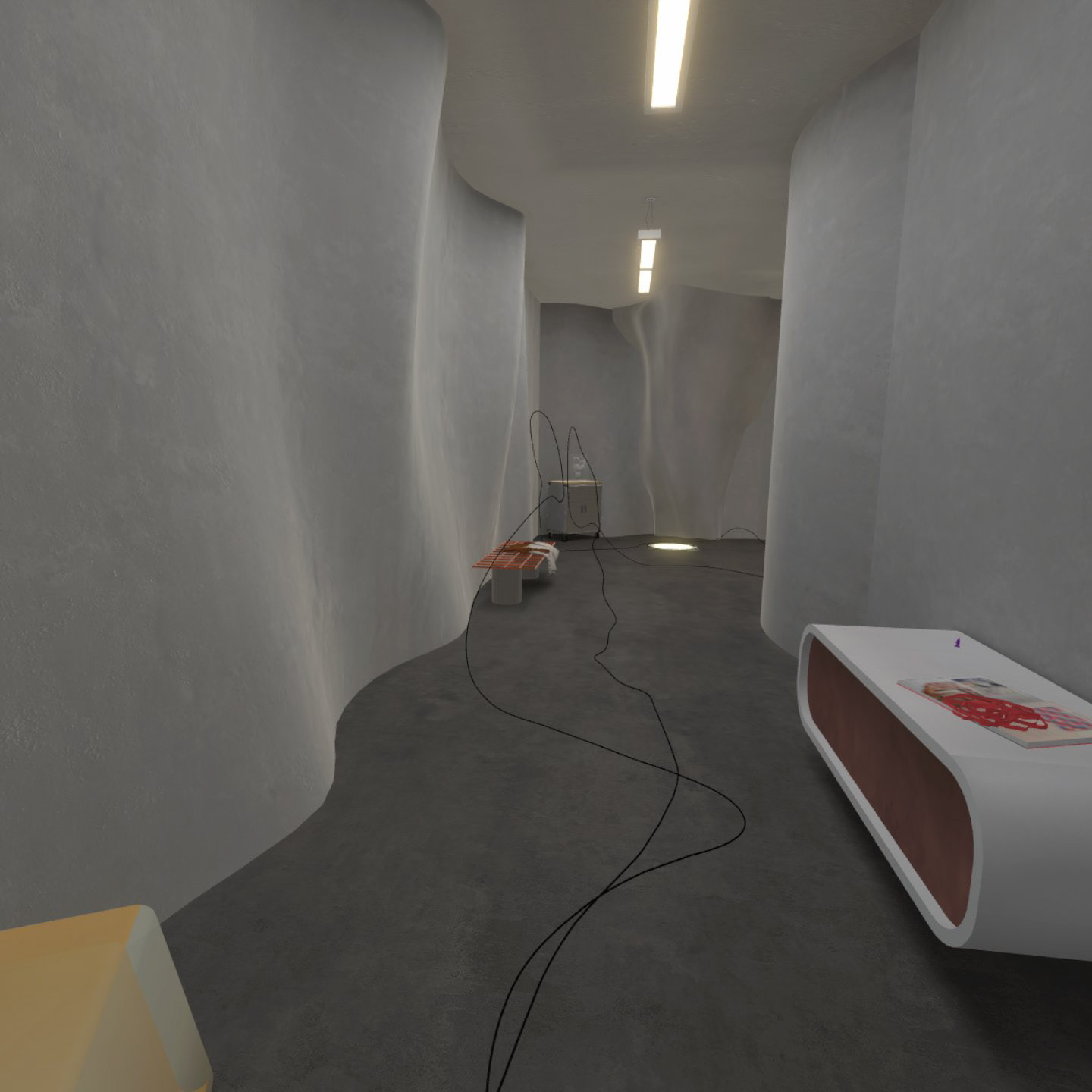
This section below particularly encapsulates my interest in the spatial representation of text and text positioning in immersive media. The mesh-like structure within this space visually resembles a project I worked on in 2021 that first sparked this interest for me, after I created a 3D mind map virtual installation that users can navigate around. The annotations within this structure can be resized and repositioned in this room, and they tell this story of why I became interested in exploring text in 3D.
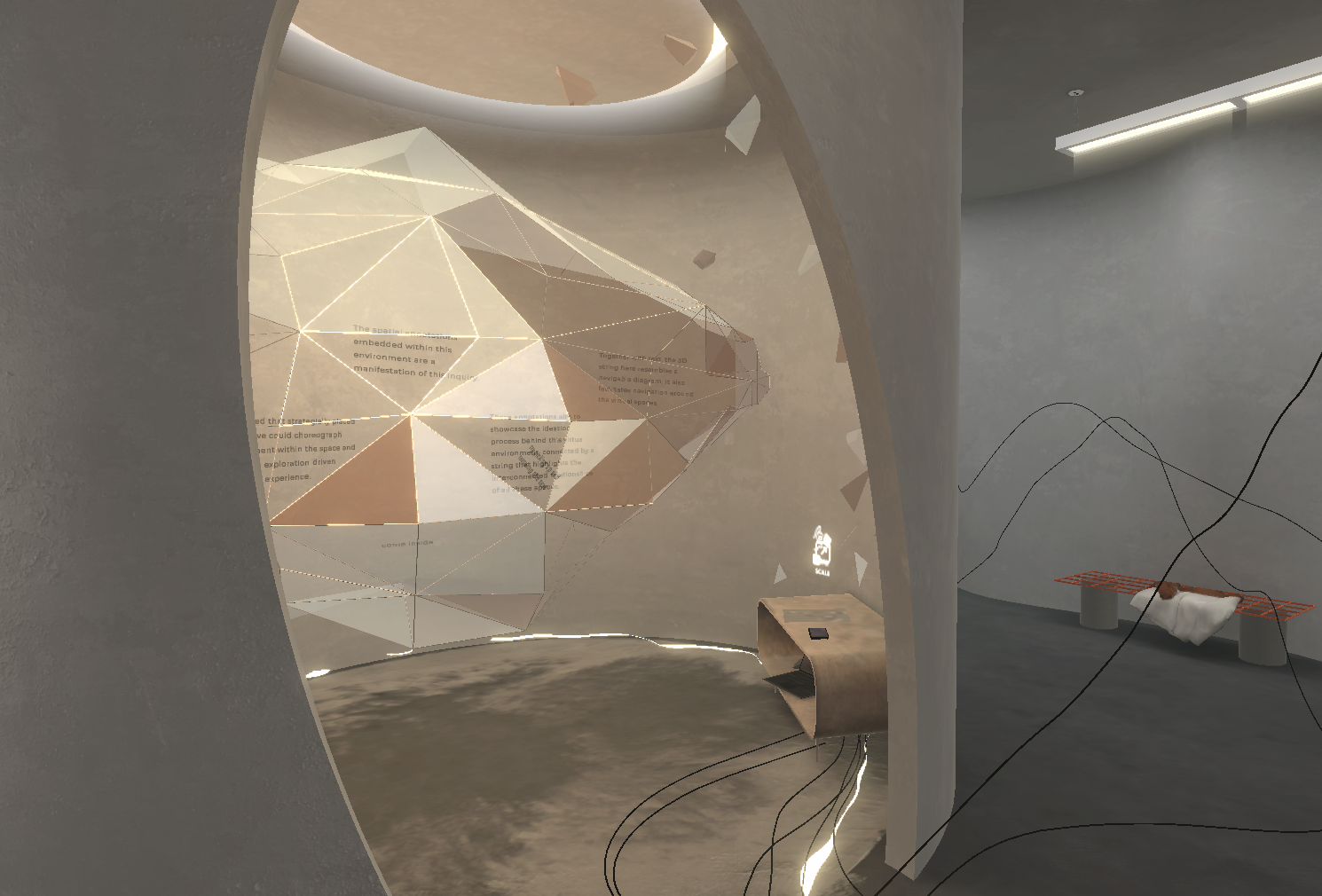
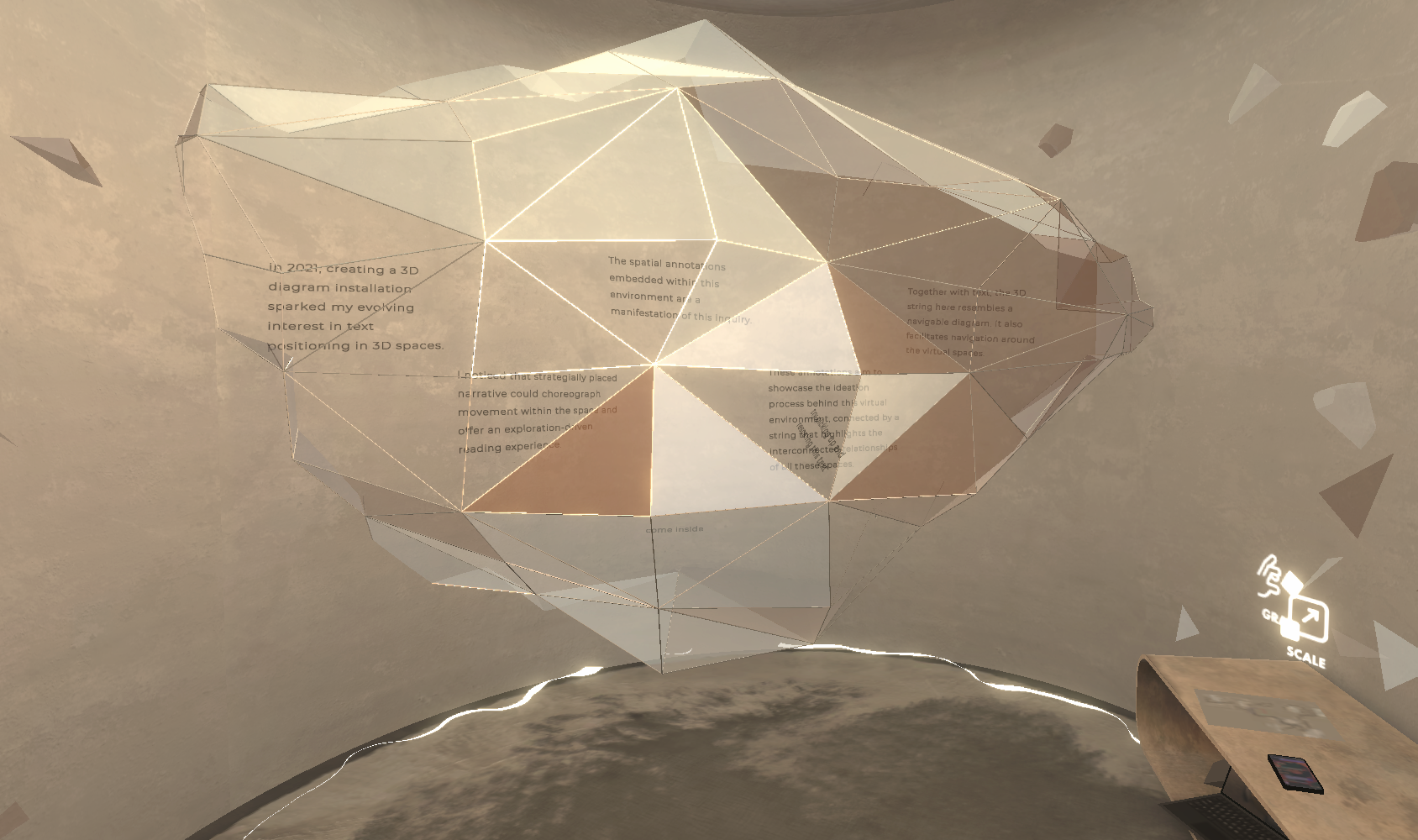
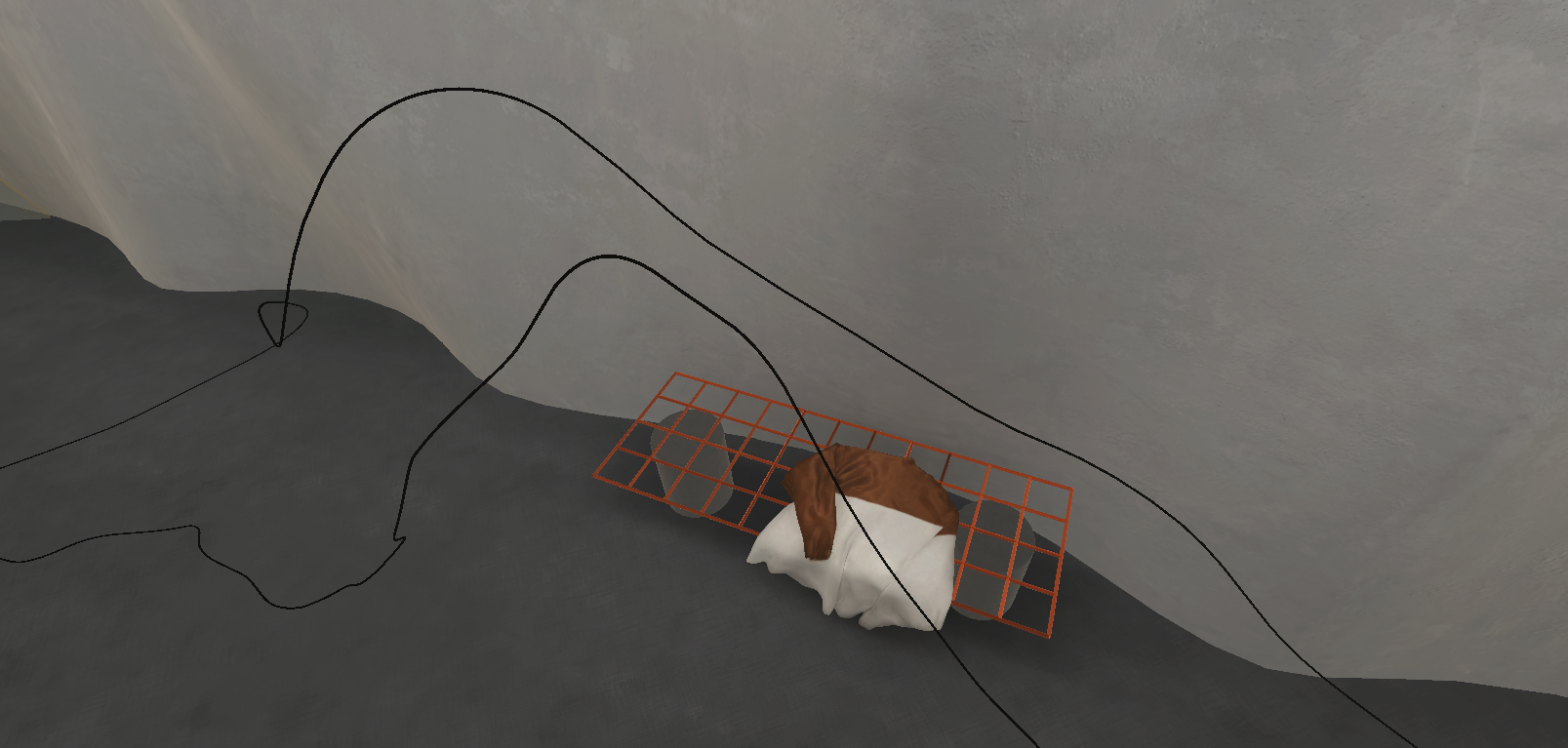
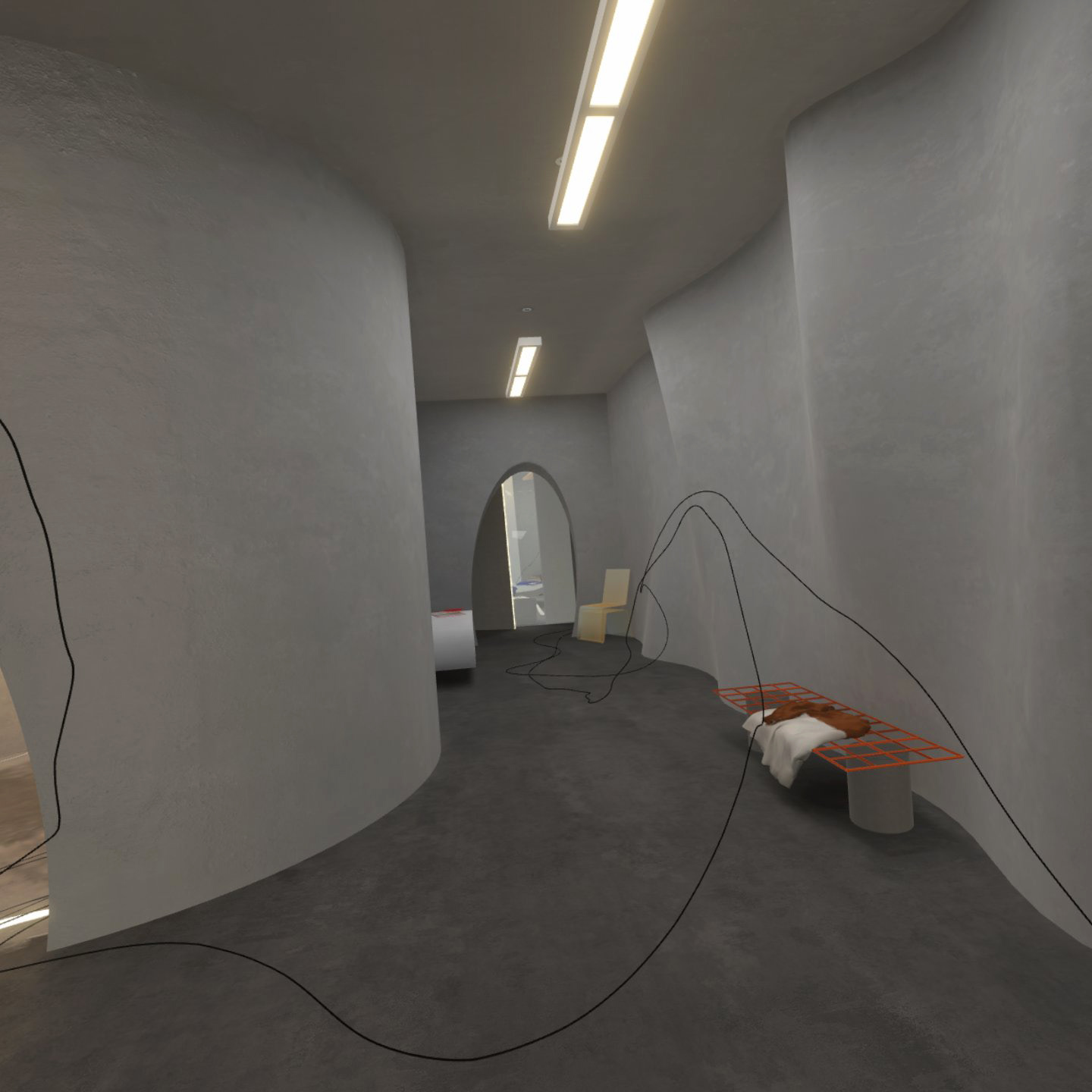
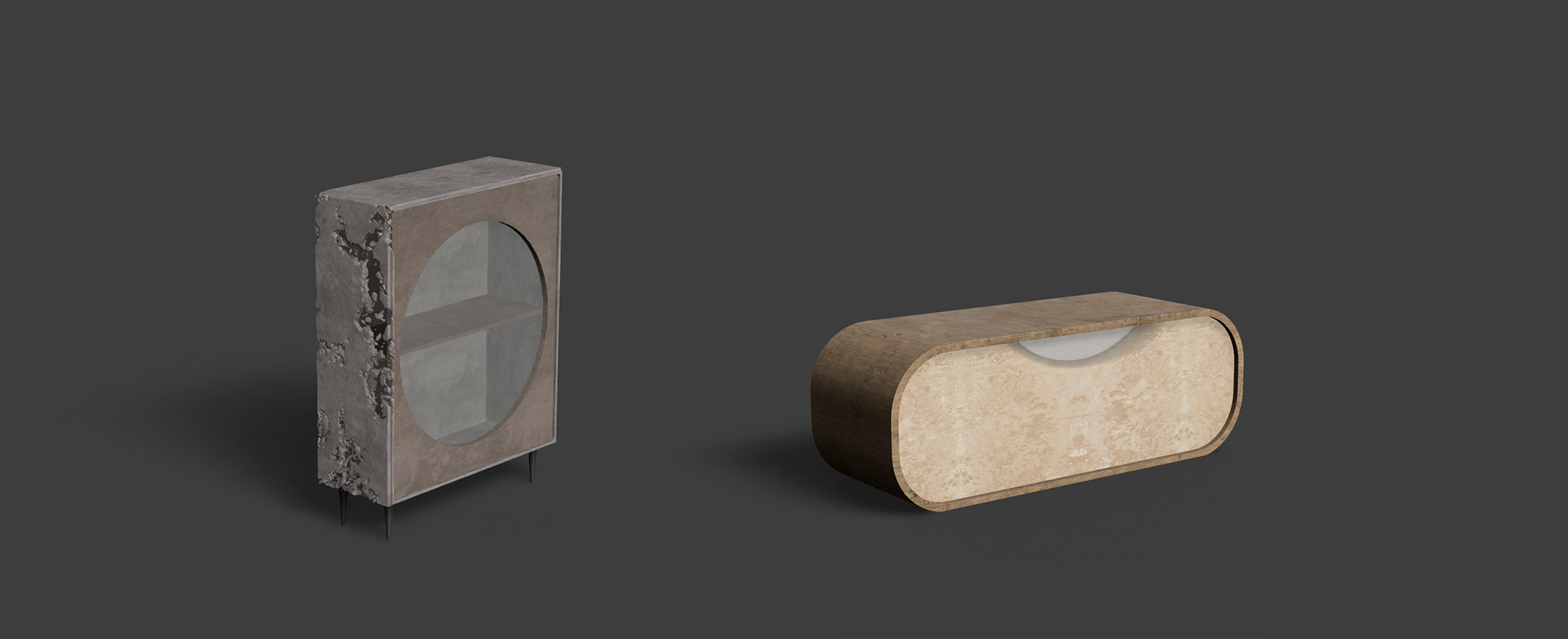
3D assets from the project
During the early ideation phase of this project, I was experimenting with a variety of spatial layouts for VR and my first prototypes were paper cutouts I was arranging on my floor. I went through a few different versions before devising the one I finally implemented. To embed a trace of my making process and ideation of this project within the VR environment, I decided to recreate these experiments in one of the virtual spaces. The same miniature layout map is positioned on the virtual floor and it is interactive, so users can pick up the small paper pieces and rearrange them. Some of the older layout versions are also represented but they are non-interactive and not as bright in appearance, placed in less prominent spots, like under a desk. This implementation also serves as one of the examples of my methods of incorporating references to physical objects that were influential to my work. I also used the little 3D-printed gnome figurine for a user-scale reference in this rough prototype, so I included the same figurine in the virtual replica of this layout map:
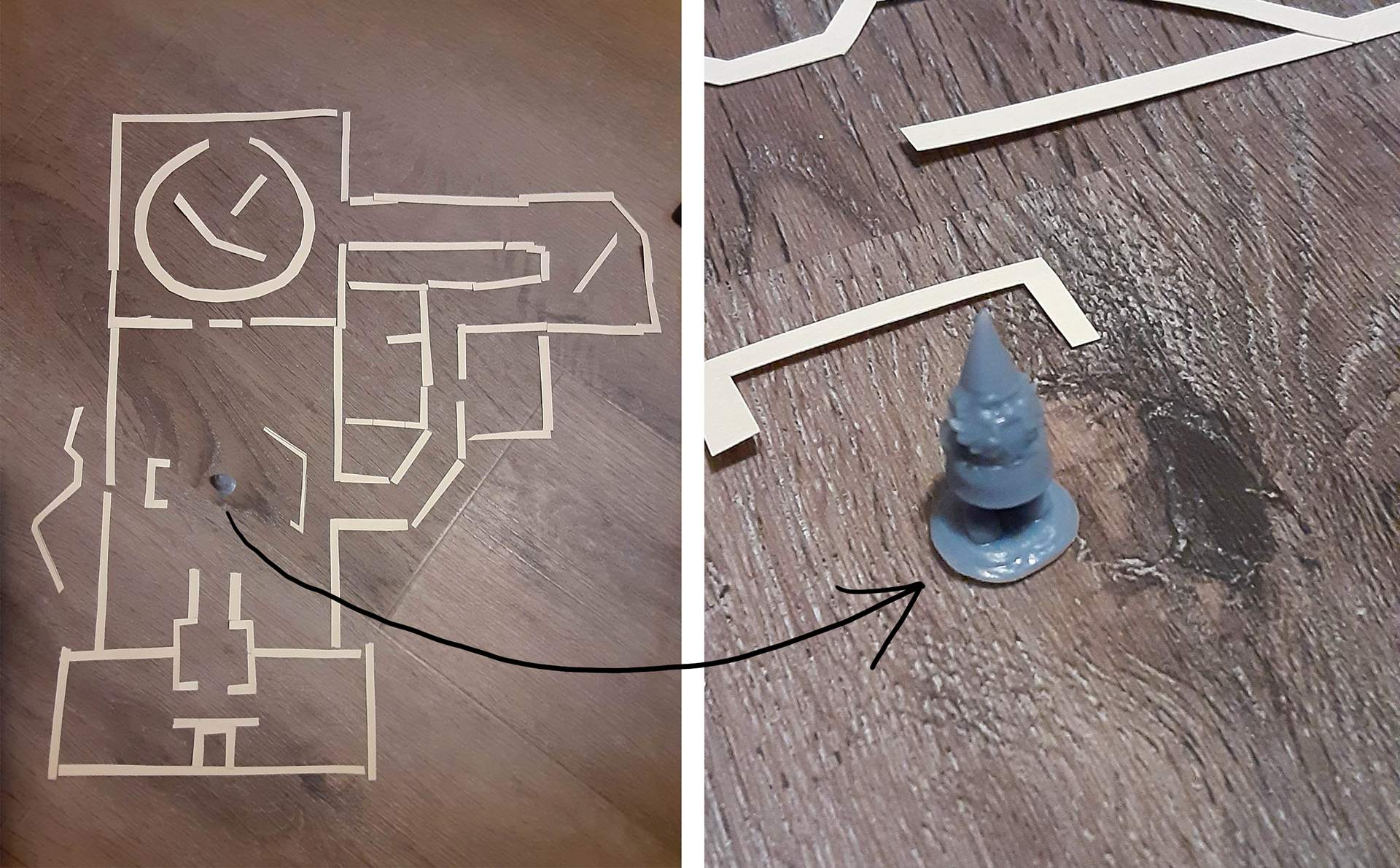
Early layout prototyping experiments using a tiny 3D printed gnome figurine and paper cutouts
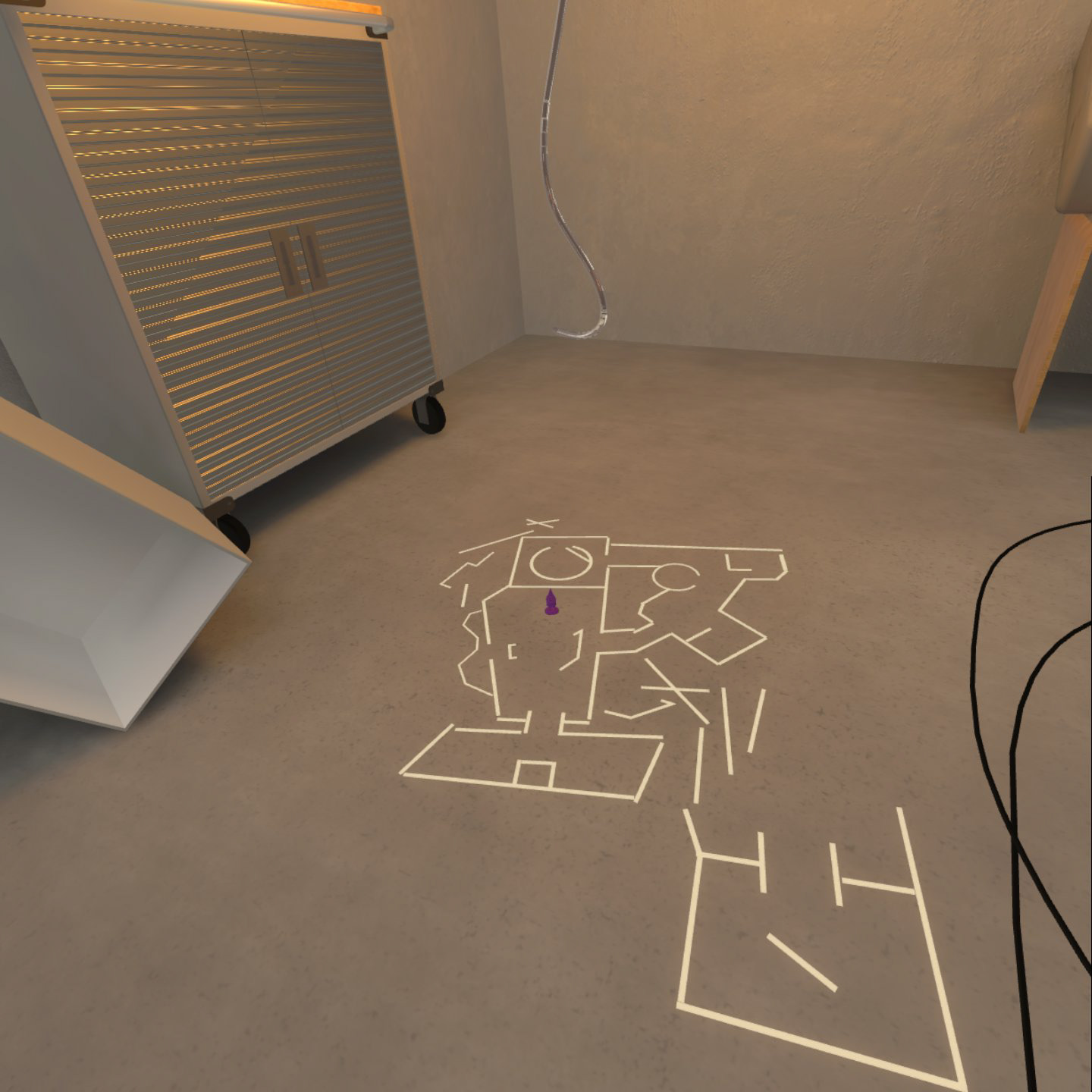
Same arrangement in the virtual space
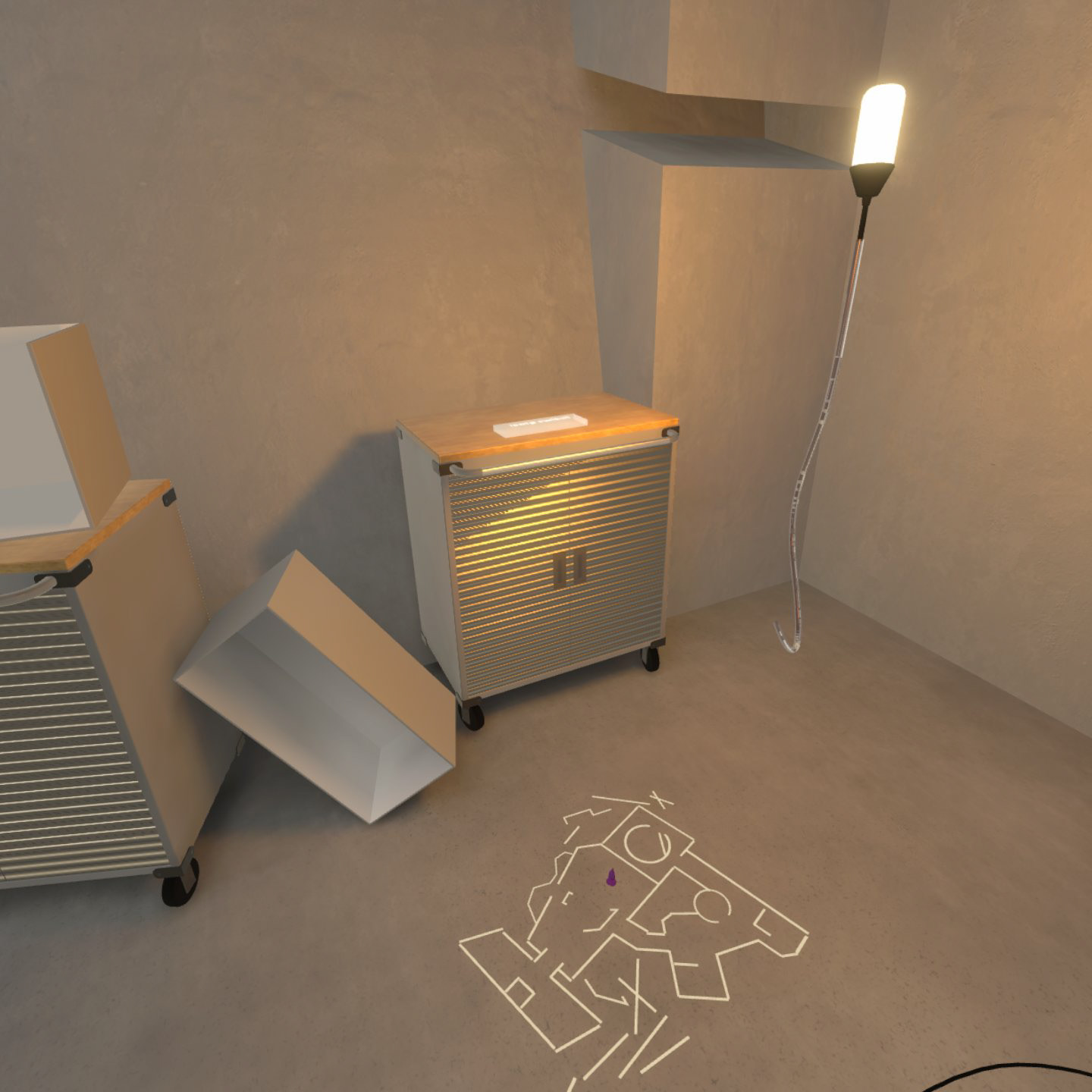
Even though it is an artificial environment, I want to instill a look that emulates an 'inhabited space'. I hope to achieve a visual intersection of a domestic and a public interior space, so I want to introduce some intentional imperfections in my design. I want to craft a personalized virtual world that not only effectively visualizes my research journey, but also infuses a personal touch into the environment design, almost like a domestic setting staged for someone else's presence.
One of the ways of doing this is by recreating objects and various references from my personal space in the physical world, such as decor and furniture. This parallel is particularly interesting to me as it connects the virtual and physical domains in really compelling ways. It has been interesting to sit and type this paragraph at a desk with the same framed picture as the one below and with the same couch in the back. This translation of experiences and meaning between the physical and virtual domains is something I am visualizing in this project, but also something I am still further thinking about as I think this virtual-physical relationship has a lot of potential:
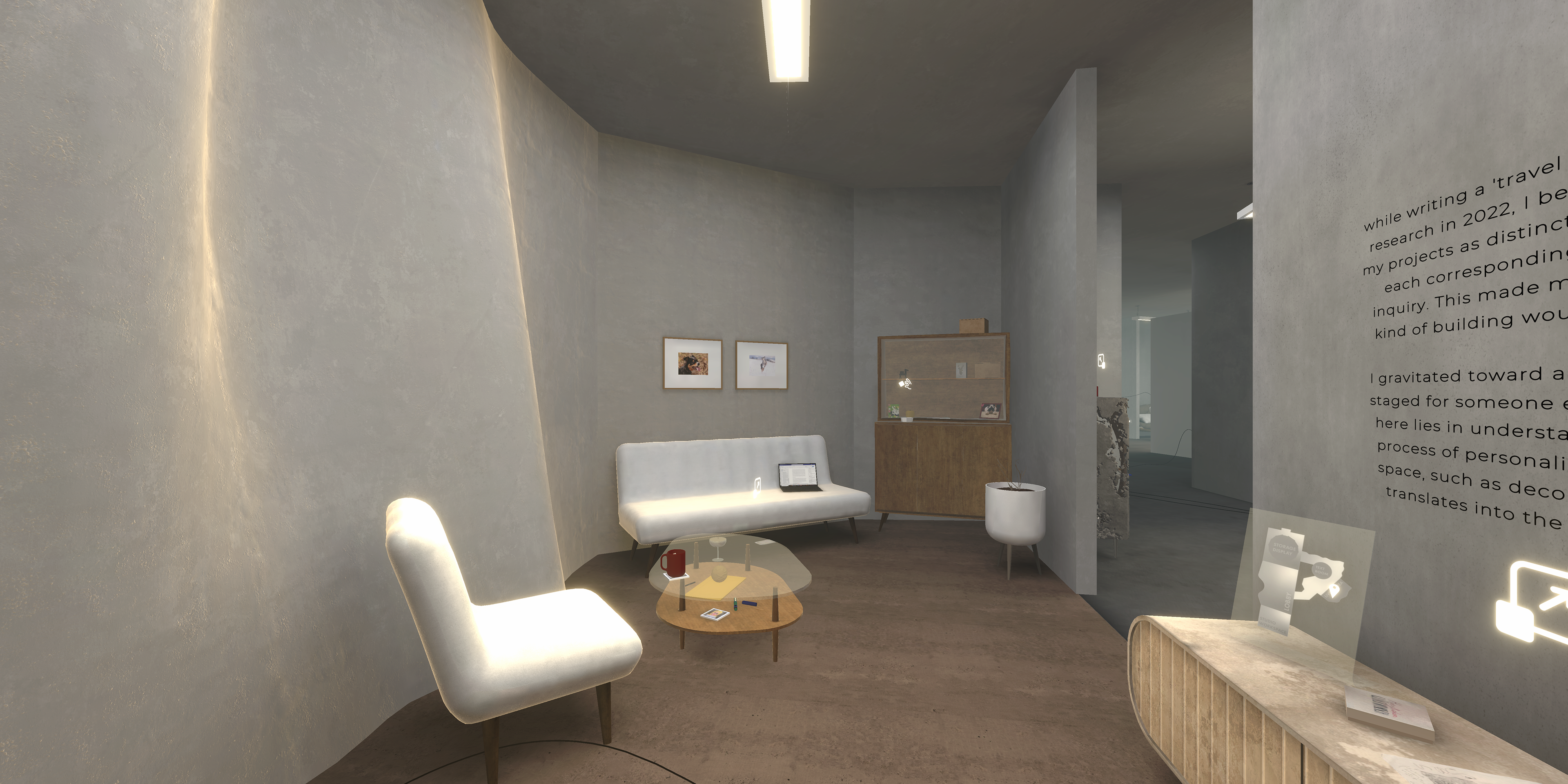
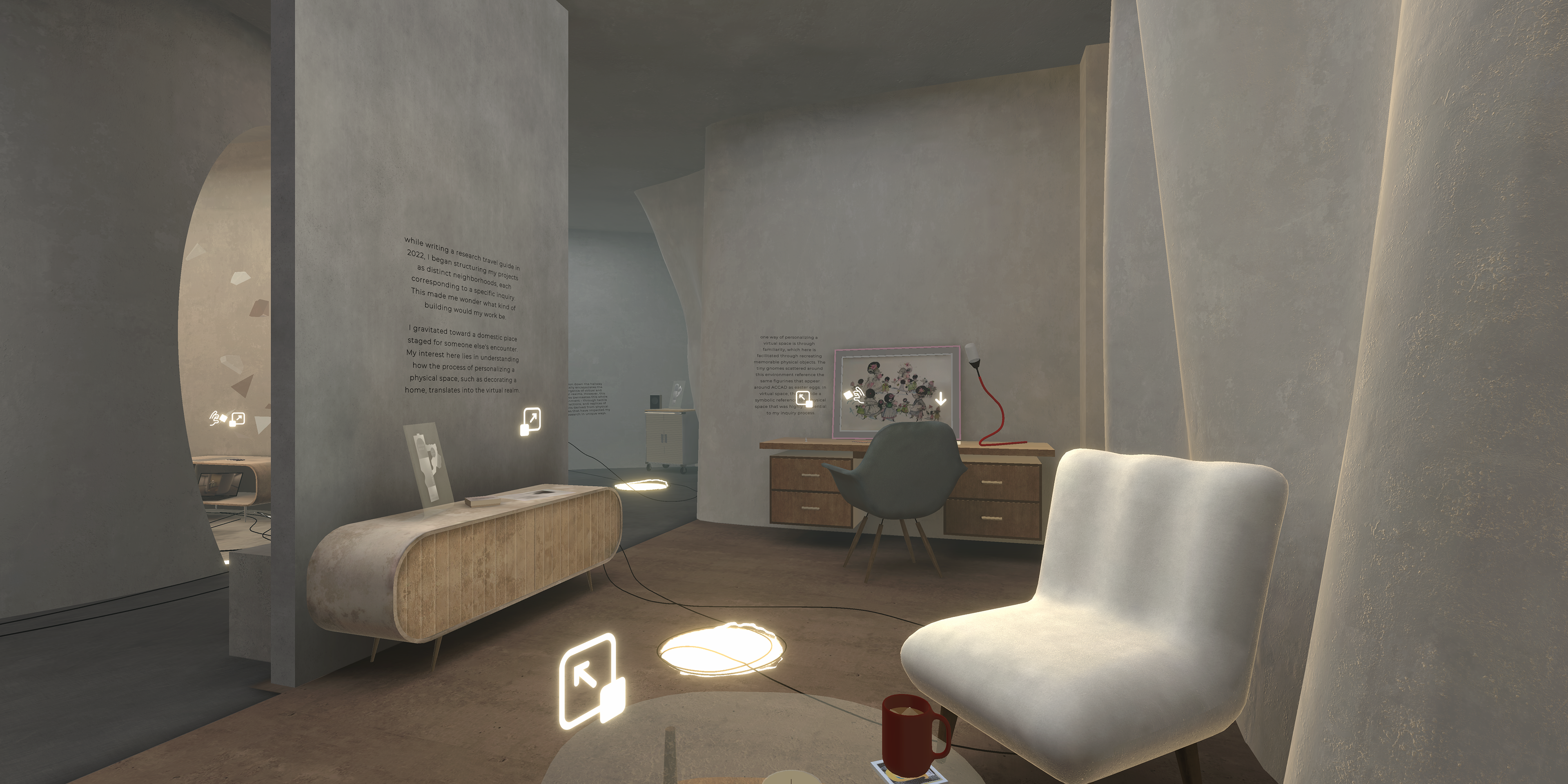
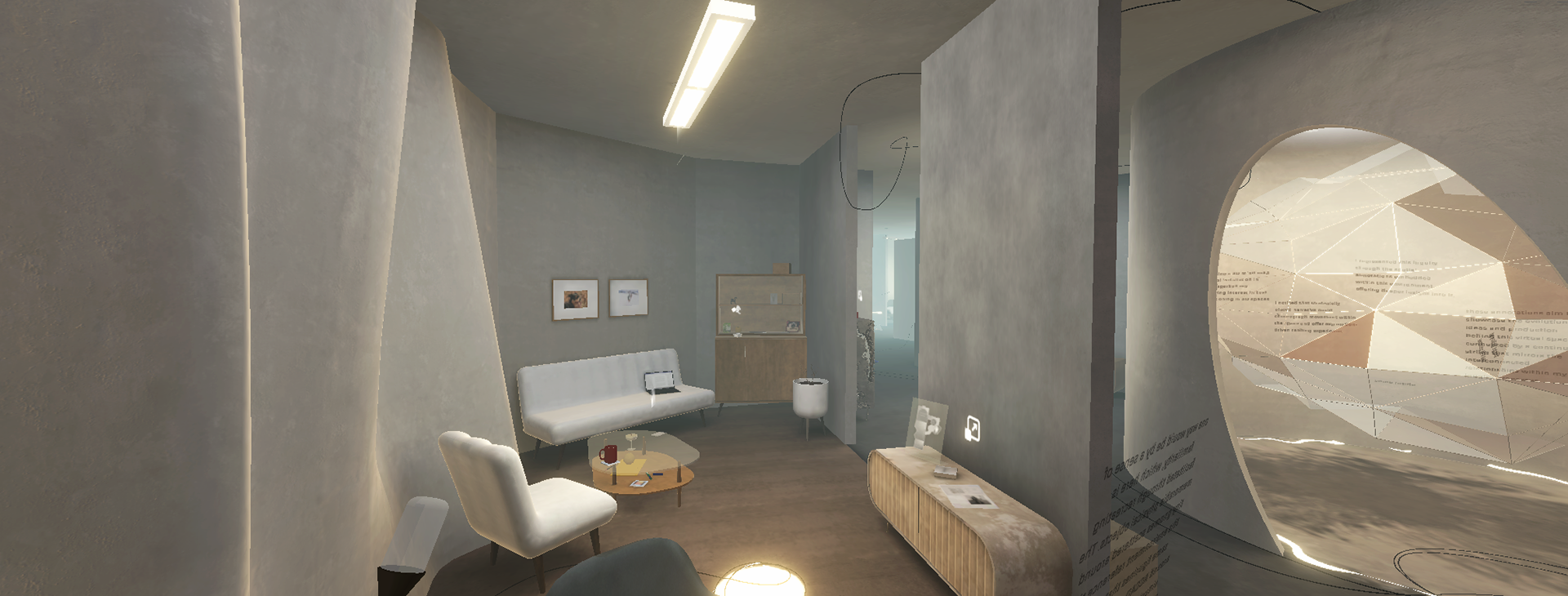
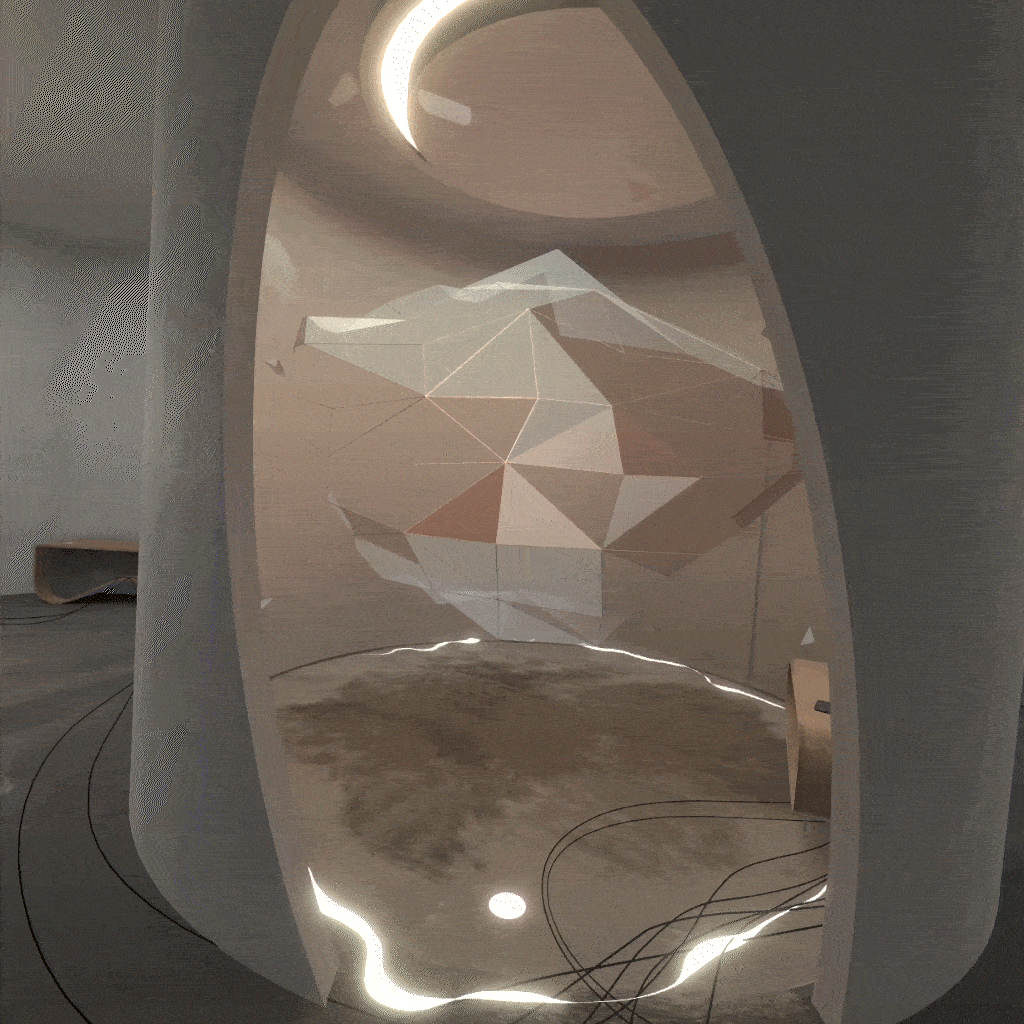
A virtual space encompassing my inquiry in Text Positioning in 3D
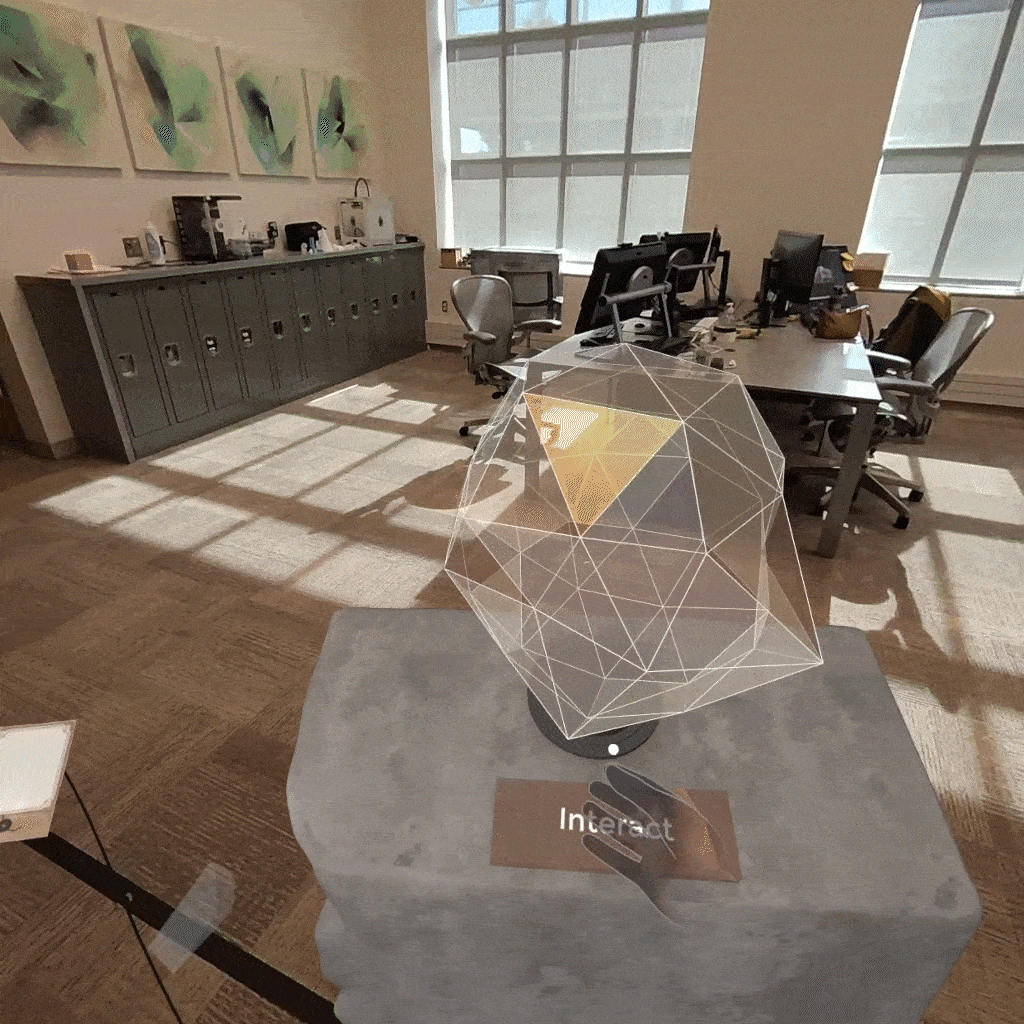
Looking around the AR space and interacting with virtual objects
One of the interests I explored during my graduate studies has been the intersection of fashion and virtual environments - specifically focused on how familiar and personal items like clothes presented in a virtual environment can infuse a sense of presence and comfort even in artificial surroundings. A portion of my environment is specifically dedicated to this interest, and it is nested within a larger section that represents my inquiries about the Intersection of Virtual and Physical Qualities, as I am using 3D scanning in this process - bringing physical objects (clothes in this case) into the virtual world. For translating these items to the virtual world, I am using the workflow and equipment (peel 3d) I am already familiar with and have access to, although this process can be done with many other alternatives:
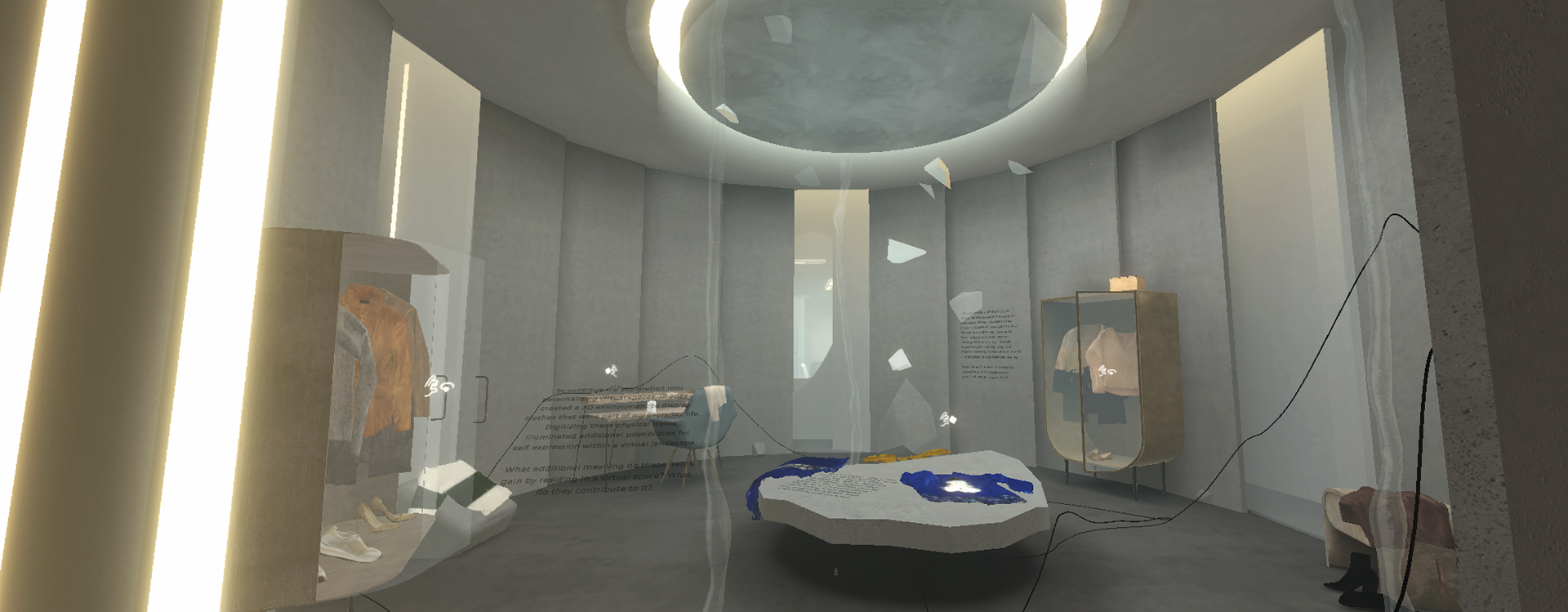
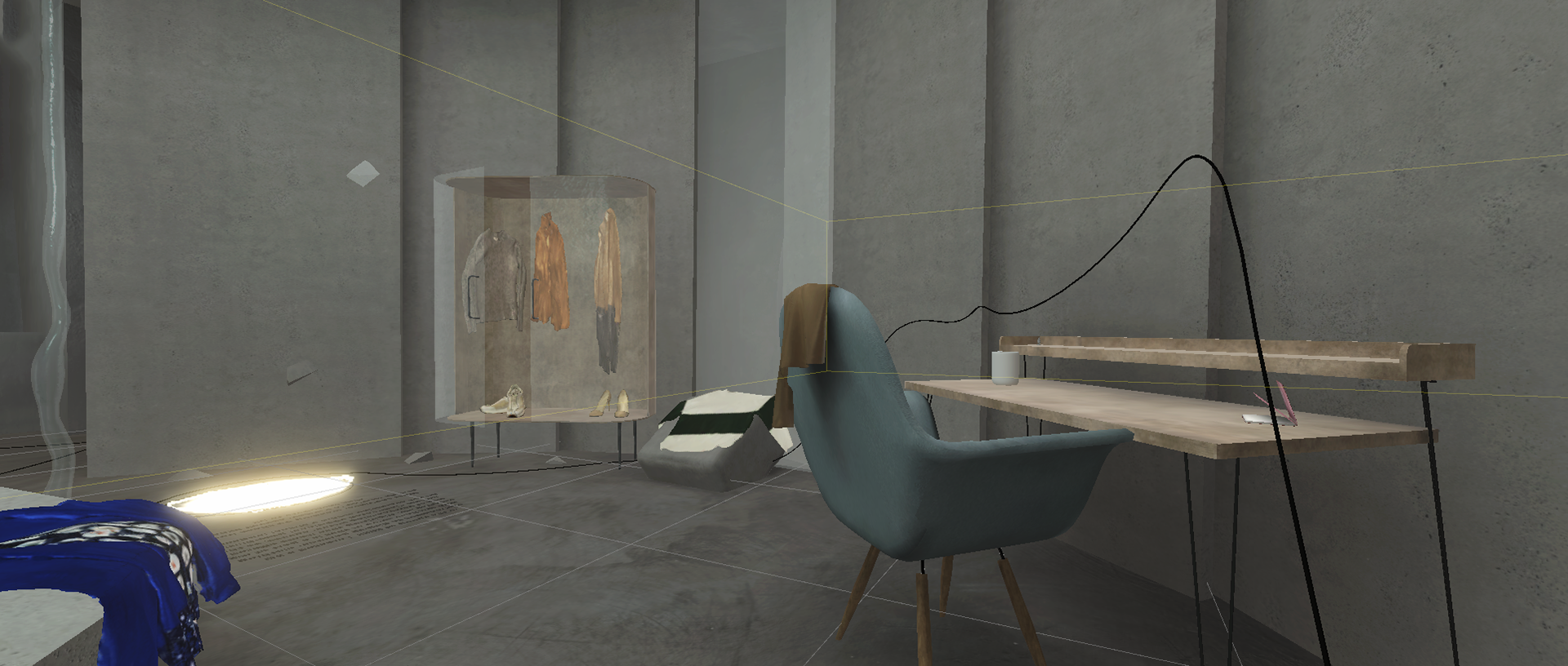
A space encompassing my inquiry into Clothing within Virtual Environments
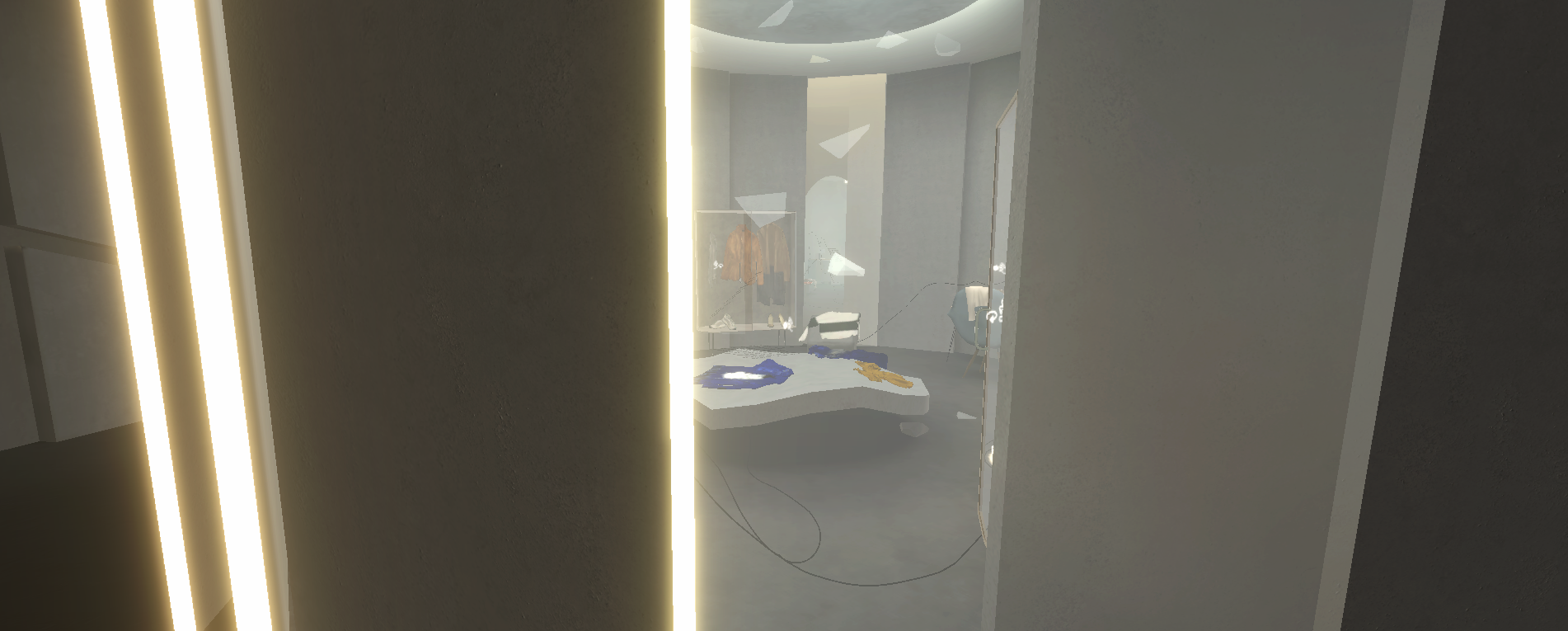
Short video demo:

